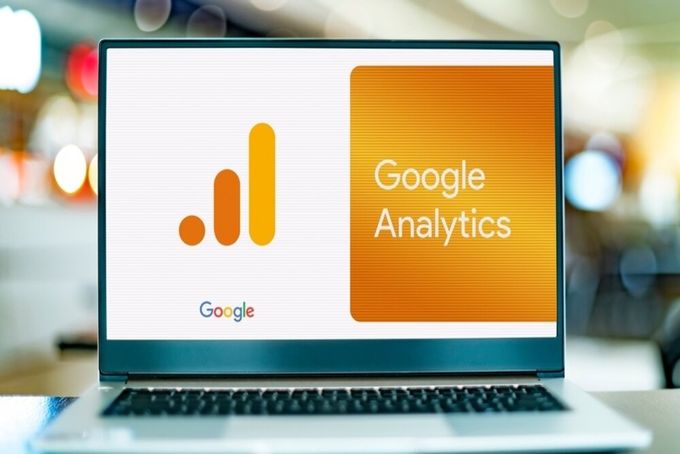Perfecting Your Sales Funnel With Micro & Macro Goals on GA 4
Updated December 29, 2022

If you have worked with older versions of Google Analytics—such as Universal Analytics—you will know all about the Google Analytics micro and macro goals. In short, this is what Google Analytics called conversions before GA 4 arrived. So if we exchange "goals" for "conversions," you'll have GA4's micro conversions and macro conversions.
All important interactions that you are leading your customers to complete are called conversions. Therefore, micro conversions are those interactions that lead your clients to finalize a macro conversion. A macro conversion is an ultimate conversion, such as the sale of a product.
Let's look at an example: you have an online shoe store. A micro conversion is when your customer subscribes to your email newsletters. The email newsletters contain special discounts and deals that lead your client to a macro conversion—the sale of a pair of your shoes.
How to Set Up Micro & Macro Conversions on GA4
There are three ways that you can set up micro and macro conversions on GA4. First, we will take a look at the three options, and then break each option down into step-by-step guides. Additionally, consider taking a look at our guide to increasing Shopify conversions with Instagram.
Option 1: Create a New Conversion Event Using Events Already Collected in GA4
- Log into GA 4
- Choose the property
- Navigate to the left-hand side menu
- Click on "Conversions"
- Click on "New Conversion Event"
- Type in the name of the event
- Save, and you're done!
Option 2: Set up a New Conversion Event Using a Custom Event
- Go to "All Events" on your property
- Click on "Create Event"
- Enter the name of the event
- Configure the parameters in the "Matching Conditions" section
- Navigate to "Conversions"
- Click on "New Conversion Event"
- Enter the name that you chose for the event—just remember that it needs to be the same as the name of the event that you created
- Save, and you're done!
Option 3: Using Google Tag Manager
- Click on "Tag"
- You'll find it in the left-hand side menu
- Click "New" > "Tag type" > "Google Analytics: GA4 event"
- In the tag, you must specify the name of the event, add your parameters and then create a trigger to assign to your tag
- Save the tag
- The GA4 container will start to populate with the new custom event
- Just remember to tell GA4 to mark this event as a conversion
Examples of Micro & Macro Goals Driving Funnel Conversions
Let's go look at an online store that sells kid computers as an example:
Macro Conversions (Goals)
This might be the sale of a kiddies' computer.
Micro Conversions (Goals)
Following a sales funnel order:
- Interaction with your landing page (clicking on sections)
- Viewing a video that explains how the computer can benefit children
- Signing up for your marketing emailer
- Reading reviews from customers
- Adding a computer to a wish list
- Adding a computer to the cart
Selecting the Best Micro & Macro Conversions for Your Business
Choosing the right macro conversions will depend largely on what industry you are in and your platform for selling—dropshipping in 2022 is vastly different from running an in-store bakery. However, micro conversions are generally common in all industries. Let's look at three examples of macro conversions per industry:
- E-commerce The finalization of a sale using, for example, Google Ads conversion tracking
- Social media platforms The opening of an account
- Brick and mortar stores Signing up for a newsletter
So, Which Should You Choose?
There is no one-size-fits-all solution for selecting the best micro and macro conversions. It's important to remember that they need to work together to give you insights into building a successful sales funnel. In other words, your micro goals should follow your customer journey to reach the main goal of macro conversions. This will tell you what is catching your customer's attention and what is leading to an interaction, and that's where you need to focus your attention. It also means that your micro goals will change organically over time, while your macro conversions are not likely to change. Just remember to check out the best Shopify sales funnel apps for optimum results.
To set your conversion goals, you need to plot the full customer journey. Once you have a typical journey of your website, you will need to decide which digital touchpoints or milestones may lead to macro conversions. Remember, this is not set in stone. As you analyze your metrics and data, you will set new micro conversions because they are developed over time.
Concluding Thoughts
It's never a walk in the park to optimize the data and analytics of an e-commerce store. The key takeaway is that you will learn over time, and it will become easier as you learn more. There is also so much information on the internet; you just need to google your questions and take the time to read up on the answers. The point is that not having micro and macro conversions is like walking with blinkers on—you will eventually be left behind.
Challenge yourself, learn, grow, and give your competitors a run for their money! And always remember that goals are just one method of boosting conversions—read How to Increase Your Shopify Conversion Rate and How to Use Facebook Conversions API for Your Shopify Store.







